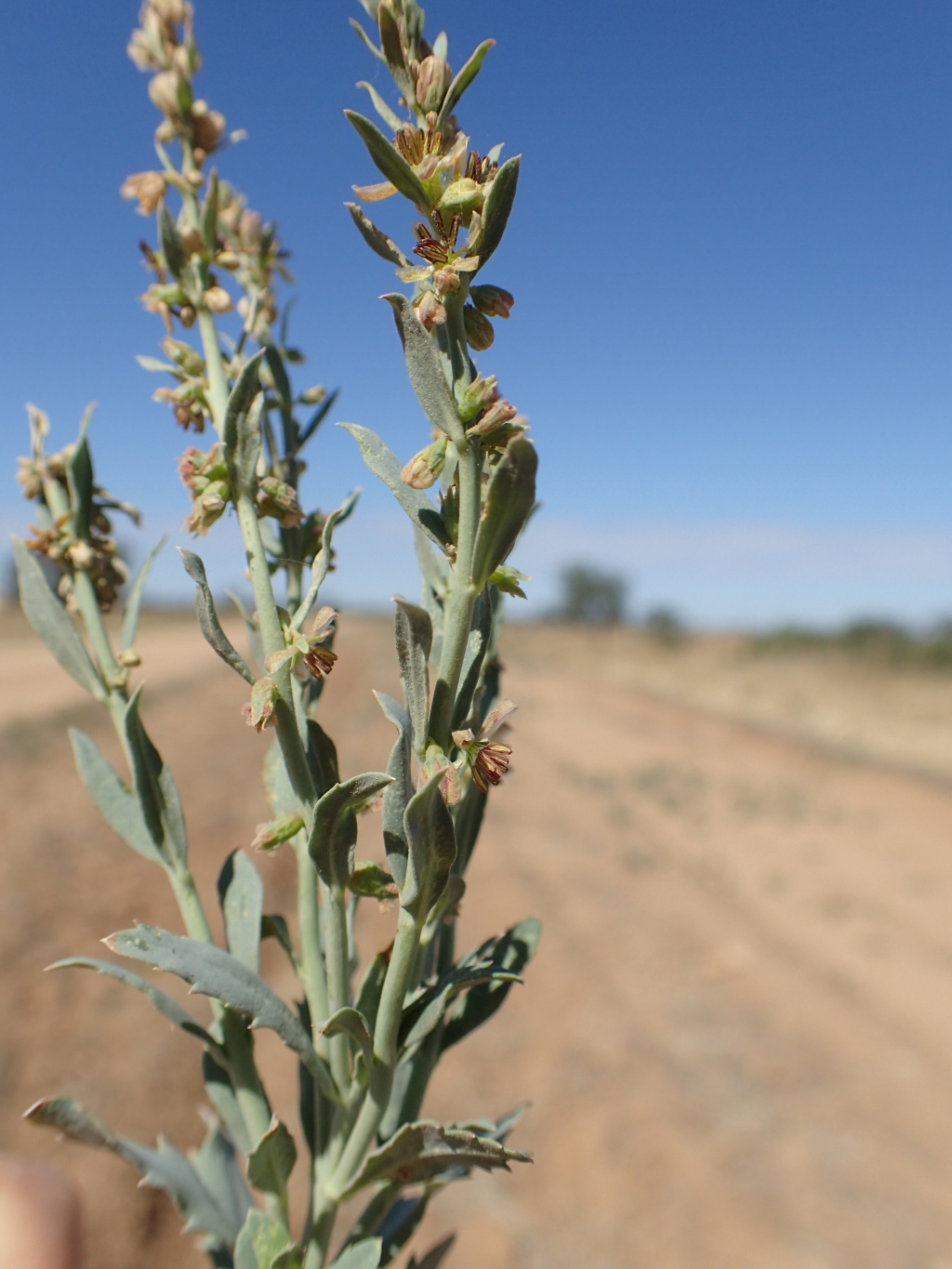Haloragis glauca f. glauca
Bluish RaspwortPerennial herb 30–50 cm tall, procumbent or erect; rootstock deeply rhizomatous; stems smooth or weakly 4-ribbed, glaucous, glabrous, or with a few curved 1- or 2-celled hairs. Leaves mostly alternate, narrow-lanceolate to oblanceolate, 15–50 mm long, 3–8 mm wide, glaucous, almost glabrous, subsessile, margins entire or serrulate; bracts linear to lanceolate, 5–8 mm long, entire, green, glaucous; bracteoles linear, 0.5–0.7 mm long, entire, brown. Inflorescence 1–3-flowered; pedicels 0.5–0.6 mm long; sepals 4, green, triangular to linear-lanceolate, 1–1.2 mm long; petals 4, green to yellow, 1.8–3 mm long; stamens 8; ovary 4-celled, globular to hemispherical, 0.4–0.8 mm long, verrucose to rugose, glabrous, styles 4. Fruit globular to pyriform, 1–3 per axil, 2–2.5 mm long, 1.5–2.8 mm diam., yellowish to dark reddish-brown, weakly 4–8-ribbed in upper part, lower part verrucose, usually glabrous.
MuM, Wim, VRiv, MSB, RobP, MuF, GipP, Gold, NIS. Also A, SA, Qld, NSW. Scattered throughout northern Victoria, particularly in the Wimmera and Riverina floodplain areas, where it often grows on heavy soils that are seasonally inundated.
2 forms, only the nominate form occurring in Victoria.
See notes under Haloragis aspera.
Jeanes, J.A. (1996). Haloragaceae. In: Walsh, N.G.; Entwisle, T.J., Flora of Victoria Vol. 3, Dicotyledons Winteraceae to Myrtaceae, pp. 887–908. Inkata Press, Melbourne.
 Spinning
Spinning


